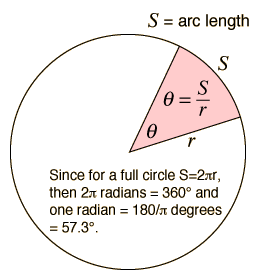1. Two men, Joel and Jerry, push against a wall. Jerry stops after 10 min, while Joel is able to push for 5 min longer. Compare the work against the wall they each do.
(A) Joel does 50% more work than Jerry.
(B) Jerry does 50% more work than Joel.
(C) Joel does 75% more work than Jerry.
(D) Neither of them do any work.

2. A simple pendulum, consisting of a mass m and a string, swings upward, making an angle θ with the vertical. The work done by the tension force is
(A) zero.
(B) mg.
(C) mg cos theta
(C) mg sin theta

3. A simple pendulum, consisting of a mass m, is attached to the end of a 1.5 m length of string. If the mass is held out horizontally, and then released from rest, its speed at the bottom is
(A) 4.4 m/s
(B) 5.4 m/s
(C) 9.8 m/s
(D) 17 m/s
4. A 4-kg mass moving with speed 2 m/s, and a 2-kg mass moving with a speed of 4 m/s, are gliding over a horizontal frictionless surface. Both objects encounter the same horizontal force, which directly opposes their motion, and are brought to rest by it. Which statement best describes their respective stopping distances?
(A) The 4-kg mass travels twice as far as the 2-kg mass before stopping.
(B) The 2-kg mass travels twice as far as the 4-kg mass before stopping.
(C) Both masses travel the same distance before stopping.
(D) The 2 kg mass travels greater than twice as far.
5. A 4-kg mass moving with speed 2 m/s and, an otherwise identical, 2-kg mass moving with a speed of 4 m/s, are gliding over a horizontal surface with friction and are brought to rest by it. Which statement best describes their respective stopping distances?
(A) The 4-kg mass travels twice as far as the 2-kg mass before stopping.
(B) The 2-kg mass travels twice as far as the 4-kg mass before stopping.
(C) Both masses travel the same distance before stopping.
(D) The 2-kg mass travels greater than twice as far.

6. A force that Object A exerts on Object B is observed over a 10-second interval, as shown on the graph. How much work did Object A do during that 10 s?
(A) Zero
(B) 12.5 J
(C) 25 J
(D) 50 J

7. A force that Object A exerts on Object B is observed over a 10-second interval, as shown on the graph. What is the average power output of A into B?
(A) O W
(B) 1.3 W
(C) 2.5 W
(D) 5 W

8. The resultant force you exert on a shopping cart, for a 10 s period, is plotted on the graph shown. How much work did you do during this 10 s interval?
(A) Zero
(B) 12.5 J
(C) 25 J
(D) -25 J

9. The resultant force you exert on a shopping cart, for a 10 s period, is plotted on the graph, shown. Which of the following statements are true?
(A) The average power input into B is greater than zero.
(B) The average power input into A is the same in the first half as the power input in the second half.
(C) The average power equals the instantaneous power.
(D) The average power is zero.

10. How much work was required to bring the 1000-kg roller coaster from Point P to rest at Point Q at the top of the 50 m peak?
(A) 32,000 J
(B) 50,000 J
(C) 245,000 J
(D) 490,000 J

11. If the roller coaster leaves Point Q from rest, how fast is it traveling at Point R?
(A) 22.1 m/s
(B) 31.3 m/s
(C) 490 m/s
(D) 980 m/s
12. What was the total work done on you by all the forces in the universe between the time just before you awoke this morning and right now?
(A) Don't have a clue
(B) Greater than zero.
(C) Zero.
(D) Can not be calculated.
13. Two cars, starting from rest at the same place, travel by different routes to the same destination. One of the cars passes the other as they drive through it. Which of the following statements will be true?
(A) The work done by friction during the trip was the same for both
(B) The total work done on both is the same.
(C) The work done by gravity is the same on both.
(D) The work done by gravity on both is positive.
14. The work done by friction, f,
(A) equals -fd, where d is the total distance moved.
(B) equals fd, where d is the total distance.
(C) can't easily be calculated because it depends on the angle between f and d.
(D) can't easily be calculated.
15. A 102 kg man climbs a 5.0 meter high stair case at constant speed. How much work does he do?
(A) 510 J
(B) 49 J
(C) 5000 J
(D) 2500 J

15. A ball is released, from rest, at the left side of the loop-the-loop, at the height shown (h = 2R). If the radius of the loop is R and there is no friction, what vertical height does the ball rise to on the other side?
(A) Less than R
(B) R
(C) 2R
(D) Greater than R




















































